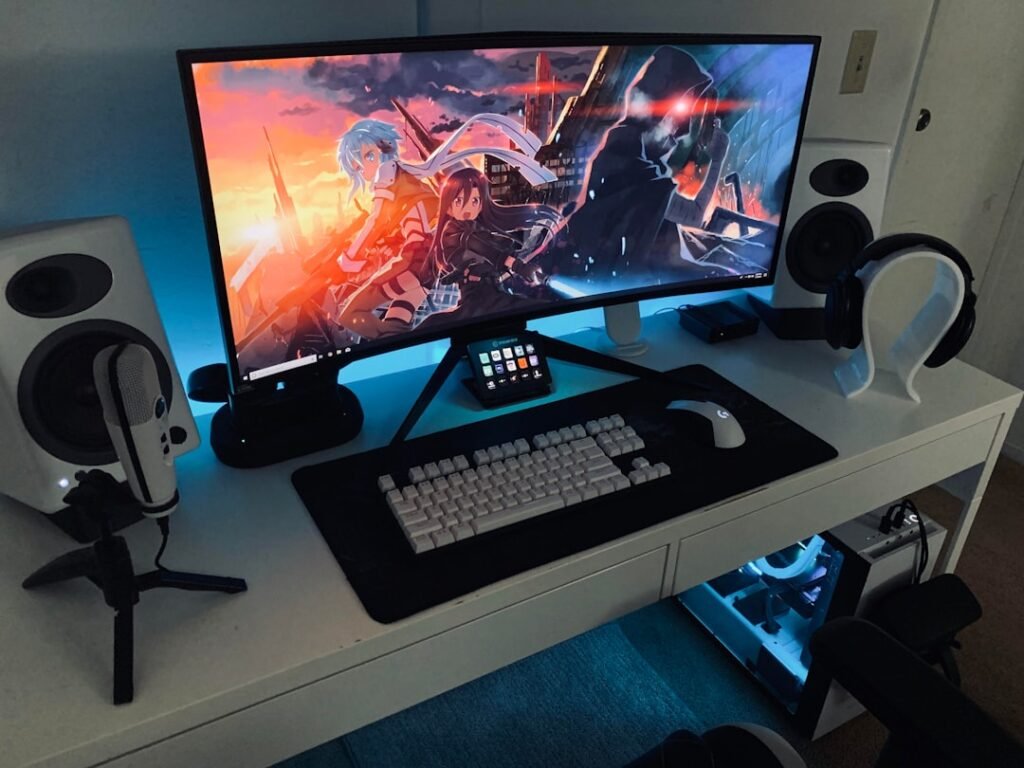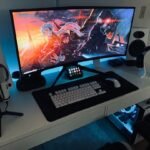Now Reading: Building a Budget Gaming PC 2025: A Step-by-Step Guide
-
01
Building a Budget Gaming PC 2025: A Step-by-Step Guide
Building a Budget Gaming PC 2025: A Step-by-Step Guide

Building a budget gaming PC can be one of the most rewarding experiences for any gaming enthusiast. I remember the first time I decided to take the plunge into PC building; it was a mix of excitement and apprehension. The world of gaming PCs can seem daunting, especially with the myriad of components available and the technical jargon that often accompanies them.
However, with a little research and planning, I discovered that creating a powerful yet affordable gaming rig is entirely achievable. The allure of a custom-built gaming PC lies not only in the performance it can deliver but also in the satisfaction of knowing that I crafted it myself. Unlike pre-built systems, which often come with inflated prices and limited upgrade options, building my own PC allowed me to tailor every component to my specific needs and budget.
In this article, I will share my journey through the process of building a budget gaming PC, from selecting the right components to optimizing performance, ensuring that anyone can embark on this exciting venture.
Key Takeaways
- Building a budget gaming PC can be a cost-effective way to enjoy high-quality gaming experiences.
- When selecting components for your budget gaming PC, prioritize the graphics card and CPU for optimal gaming performance.
- Follow a step-by-step assembly process, ensuring all components are securely installed and connected.
- After assembly, install and configure the operating system and drivers to ensure smooth performance.
- Consider overclocking and optimizing your budget gaming PC for improved performance, but do so cautiously to avoid damage.
Selecting the Right Components for Your Budget Gaming PC
The first step in my journey was selecting the right components for my budget gaming PI quickly learned that the key to a successful build lies in balancing performance with cost.
I found that setting a clear financial limit not only kept me focused but also prevented me from getting lost in the sea of high-end components that were beyond my reach.
When it came to choosing components, I focused on the core elements: the CPU, GPU, motherboard, RAM, storage, and power supply. Each of these parts plays a crucial role in the overall performance of the system. For instance, I discovered that while a powerful graphics card is essential for gaming, pairing it with a capable CPU is equally important to avoid bottlenecks.
I spent hours researching different brands and models, reading reviews, and comparing benchmarks to find the best value for my money. Ultimately, I settled on a mid-range CPU and GPU combination that offered excellent performance without breaking the bank.
Step-by-Step Assembly of Your Budget Gaming PC

Once I had gathered all my components, it was time to dive into the assembly process. I remember feeling a mix of excitement and nervousness as I laid out all the parts on my workbench. To ensure a smooth assembly, I followed a step-by-step approach.
First, I carefully installed the CPU onto the motherboard, making sure to align it correctly and secure it in place. This step required a gentle touch, as I wanted to avoid damaging any pins. Next came the installation of the RAM and GPU.
I found that inserting the RAM sticks into their slots was straightforward, but I had to ensure they clicked into place securely. The GPU installation was slightly more involved; I had to remove a few screws from the case and carefully slide it into the PCIe slot on the motherboard. With each component installed, I felt a sense of accomplishment building up inside me.
Finally, I connected all the necessary cables from the power supply to the motherboard and other components, ensuring everything was tidy and organized.
Installing and Configuring the Operating System and Drivers
With my budget gaming PC fully assembled, it was time to install the operating system. I opted for Windows 10 due to its compatibility with most games and software. The installation process was relatively straightforward; I created a bootable USB drive using Microsoft’s Media Creation Tool and plugged it into my new rig.
As I followed the on-screen prompts, I felt a rush of anticipation knowing that soon I’d be able to experience gaming on my custom-built machine. After successfully installing Windows 10, I turned my attention to configuring drivers for my hardware. This step is crucial for ensuring optimal performance and stability.
I visited the manufacturers’ websites for my GPU and motherboard to download the latest drivers. Installing these drivers was simple; however, I made sure to restart my PC after each installation to ensure everything was functioning correctly. Once all drivers were installed, I took a moment to bask in the satisfaction of seeing my new gaming PC come to life.
Overclocking and Optimizing Your Budget Gaming PC
As someone who enjoys pushing hardware to its limits, overclocking became an exciting next step in my journey. Overclocking allows me to squeeze extra performance out of my CPU and GPU without spending additional money on upgrades. However, I approached this process with caution, as improper overclocking can lead to instability or even damage.
I began by researching safe overclocking practices specific to my CPU and GPU models. Using software like MSI Afterburner for my GPU and Intel XTU for my CPU made this process manageable. Gradually increasing clock speeds while monitoring temperatures became an exhilarating experience.
Each small increment brought noticeable improvements in performance during gaming sessions. Additionally, optimizing settings in games themselves—such as adjusting resolution and graphical fidelity—further enhanced my gaming experience without compromising frame rates.
Testing and Benchmarking Your Budget Gaming PC

After overclocking and optimizing my system, it was time for testing and benchmarking. This step is essential for gauging how well my budget gaming PC performs under various conditions. I downloaded benchmarking software like 3DMark and UserBenchmark to assess both synthetic performance and real-world gaming capabilities.
Running these tests provided me with valuable insights into how my build compared to others in similar price ranges. I also took the opportunity to play some of my favorite games at different settings to see how they performed on my new rig. The thrill of watching frame rates soar while playing graphically demanding titles was incredibly satisfying.
By comparing results from benchmarks with actual gameplay experiences, I could fine-tune settings further for an optimal balance between visual quality and performance.
Upgrading and Maintaining Your Budget Gaming PC
As time went on, I realized that maintaining and upgrading my budget gaming PC would be an ongoing journey rather than a one-time project. Technology evolves rapidly, and new components are constantly being released that could enhance my gaming experience even further. Keeping an eye on market trends allowed me to identify potential upgrades that would fit within my budget.
Regular maintenance became part of my routine as well; cleaning dust from fans and components ensured optimal airflow and cooling efficiency. Additionally, monitoring system temperatures using software tools helped me keep track of how well my cooling solutions were performing. By staying proactive about maintenance and being open to future upgrades, I could ensure that my budget gaming PC remained relevant and capable of handling new games for years to come.
Conclusion and Further Resources for Budget Gaming PC Builders
In conclusion, building a budget gaming PC has been an incredibly fulfilling experience that has taught me valuable skills along the way. From selecting components wisely to assembling them with care, each step has contributed to not only creating a powerful machine but also deepening my understanding of computer hardware. The satisfaction of playing games on a rig that I built myself is unmatched.
For those looking to embark on their own budget gaming PC building journey, there are numerous resources available online—from forums like Reddit’s r/buildapc to YouTube channels dedicated to PC building tutorials. Engaging with these communities can provide support and inspiration as you navigate your own build. Remember that patience is key; take your time researching components and don’t hesitate to ask questions along the way.
With determination and enthusiasm, anyone can create their dream gaming setup without breaking the bank.
If you’re looking to optimize your gaming experience beyond just building a budget PC, you may want to check out this article on optimal performance and the best keybinds and control settings. This article can help you fine-tune your gameplay to get the most out of your gaming sessions. Additionally, if you’re a fan of horror games, you might enjoy reading about the top 10 horror games that will give you nightmares. And for those looking to level up their gaming collection, be sure to check out the article on

















